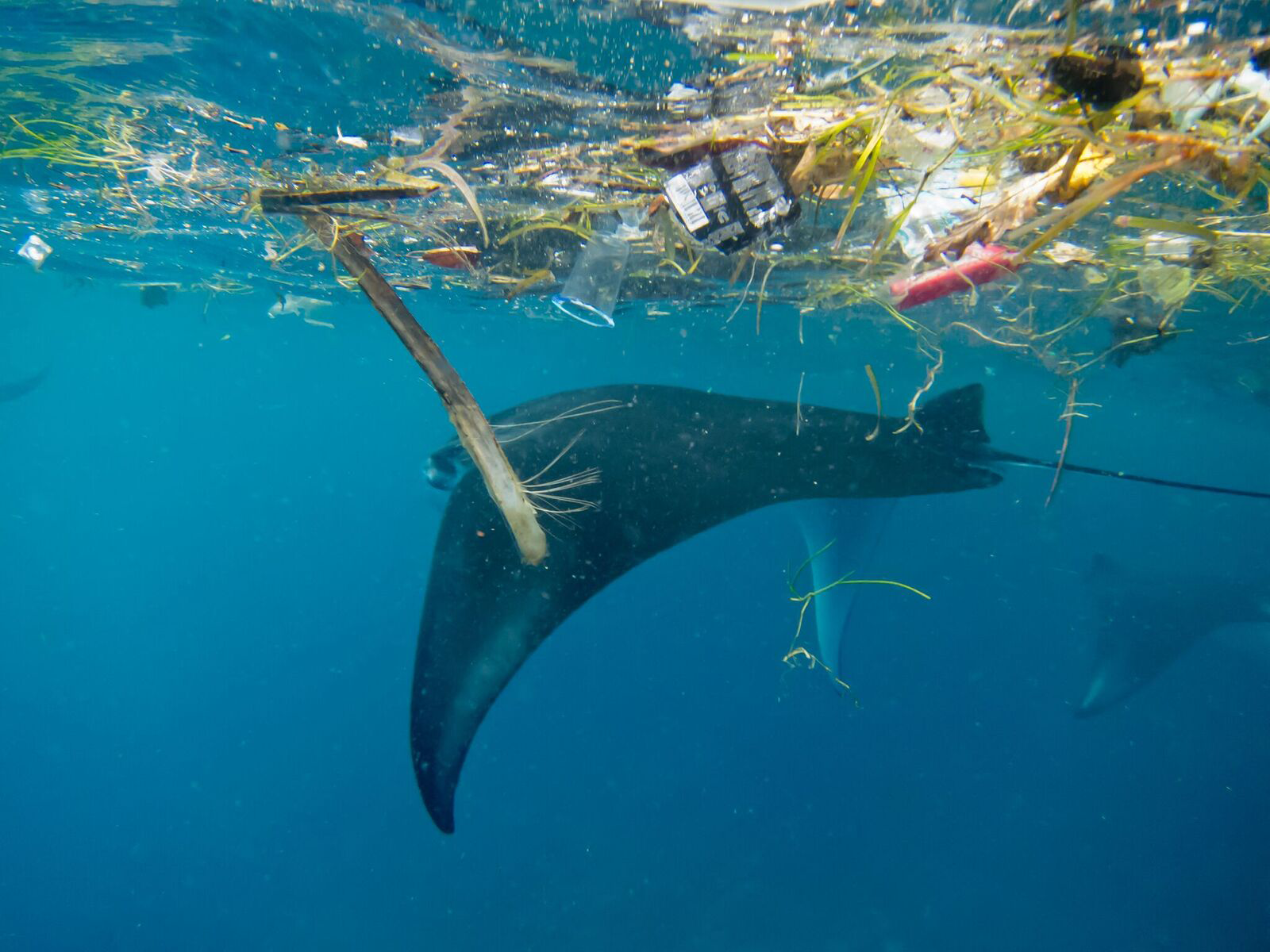How Much Trash is in the Ocean?
Trash has been found in every corner of our ocean

In many ways, the ocean is “ground zero” for the plastic pollution crisis. It is so vast, yet plastics have been found in every corner of the ocean—from the deepest trench to the most remote Arctic ice sheets. Sea turtles, whales and seabirds are frequently discovered with plastics in their guts, unable to escape the plastic deluge.
So, it’s normal to wonder, how much trash is in the ocean?
To answer that question, we first must understand some of the main sources of plastic pollution in the ocean. The most well-known source is the stuff everyone interacts with regularly, is the plastic products that are thrown out but don’t make it to a recycling center or secured landfill. These include single-use food and other types of packaging—plastic bags, plastic bottles, food wrappers and bottle caps, for example—which make up most of the plastic items found on beaches and waterways around the world with Ocean Conservancy’s International Coastal Cleanup®, the world’s largest volunteer event to clean up beaches, shorelines and river banks.
Get Ocean Updates in Your Inbox
Sign up with your email and never miss an update.
While numerous scientific studies have attempted to model the amount of plastics that enter the ocean every year, the most comprehensive estimate to date predicts some 11 million metric tons of these plastics that should have gone to a landfill or other waste management center but end up in the ocean instead. That’s equivalent to more than a garbage truck’s worth of plastics entering the ocean each minute.
But mismanaged waste is just one of the sources of ocean plastic pollution. Abandoned, lost or otherwise discarded fishing gear (also known as “ghost gear”) is largely made of plastics and once lost at sea, wreaks havoc on ocean wildlife indefinitely. Unfortunately, there are no strong estimates of how much ghost gear is floating in our ocean, but recent studies indicate that ghost gear makes up 46–70% of all floating macroplastics (>5mm in size) in the ocean gyres by weight.
It’s notable that neither of these figures accounts for how much plastic—including ghost gear—gets washed into the ocean during extreme weather events or natural disasters like tsunamis and floods, which are intensifying and occurring more frequently with human-induced climate change. (We do know that large debris items swept to sea during such events transport invasive species across oceans to distant shores where they can severely damage vulnerable ecosystems.
And while single-use plastics and ghost gear are certainly highly visible, there are yet other sources of plastic pollution in our ocean that are much harder to see with the naked eye. Microplastics are plastics smaller than 5mm in any dimension, and the shapes of microplastics most commonly encountered in the environment are fibers, tire-wear particles and paint particles. Plastic microfibers shed from synthetic textiles every time we run a load of laundry. Scientists have found that a single load of laundry can generate up to 18 million plastic microfibers, which exit our homes and make their ways into freshwater environments and the ocean.
Tire-wear particles shed from driving on roads, and paint particles sloughed from buildings or blasted off of vessels needing new paint are other significant sources of microplastic pollution entering our ocean.
With such diverse sources of plastics—and broad estimates for each—it’s tricky to put an exact number on how much plastic is in our ocean. A recent study put that figure at approximately 171 trillion pieces of plastic floating at the ocean’s surface. Future studies may aim to further refine this estimate by including plastics that have sunk below the ocean surface, due either to the plastics’ density or from being colonized by marine life.
While current estimates are ballpark figures, they continue to be refined as more data on the plastic-pollution problem become available. What we know for sure, however, is that there are enough plastics in the ocean at this very moment to be causing widespread harm to ocean life. To date, nearly 1,300 different marine species have been documented with plastics in their bodies.
Everyone can do their part to protect ocean wildlife and combat plastic pollution. Join Ocean Conservancy and call on your state’s elected officials to support and pass legislation to reduce the amount of plastic pollution entering our ocean every day.